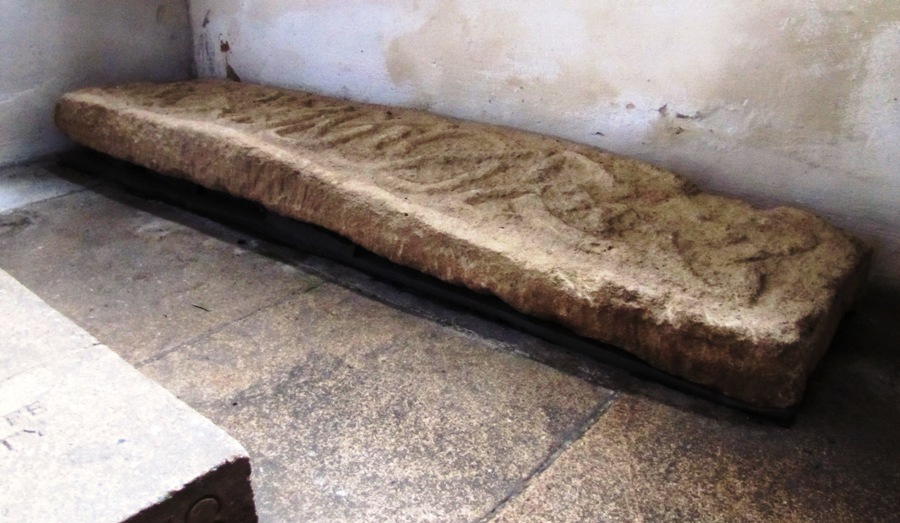What does the inscription mean or depict? Whose burial place did it mark? 11th century – or earlier? What does it tell us about the history of Barnack? How might it relate to Viking presence in the area?
Nick Black had been researching other local features with possible Viking connections and came across this ornately engraved stone in Barnack church. Nick contacted FRAG via the Peterborough Archaeology website to see if we could throw any light on it.

There’s a useful short article by Quinton Carroll but still many more questions than answers (the article is reproduced below). We wonder whether you might know more about the stone – or can provide more information about its possible origins. Or perhaps you know of good documentary sources concerning Viking presence in the area.
We welcome any contributions. Please add comments below or email enquiries@peterborougharchaeology.org
The stone was discovered in the churchyard in 2011 and is now displayed inside the Church of St John the Baptist at Barnack. It has an ornate interlaced design. The stone tapers downwards towards one end.

Barnack of course has been an important source of stone since Roman times and there are many Anglo-Saxon carvings which are known to have originated here.
The Barnack Anglo-Scandinavian Grave Cover
Quinton Carroll
Diocesan Archaeological Advisor, Diocese of Peterborough
Barnack Limestone from the nearby quarries is a staple building material for the mediaeval church. The beds of limestone provided building material for parish churches, abbeys and cathedrals, and, as the region’s major source of building stone, were of such value that the major ecclesiastical land owners frequently entered legal proceedings over ownership.
The value of the stone can be seen in the extent to which it is used in major structures – Ely Cathedral is almost entirely built of Barnack limestone – and in reinforcing pieces, such as quoins (corner-stones) on smaller churches. However its qualities also make for an excellent material for monumental carving, many examples of which are known from the area.
Ornate carving is known from the Anglo-Saxon (c.800 – 1050AD) and mediaeval periods (1050-1450AD). Mediaeval carvings are more usually in the form of grave markers or slabs, often of very ornate and florid form. Anglo-Saxon carvings are more varied, with cross shafts, reliefs, grave covers and other decorative pieces known. Artistically, Anglo-Saxon artwork is distinguishable from the Mediaeval by its heavy use of interlace, a decorative feature of lines twisting back and under each other, a style that was carried through into the Anglo-Scandinavian period ( 900-1000AD), when this area was part of the Scandinavian (Viking) settlement. lts variety of form is endless.
This piece, unearthed in the churchyard in 2011, is a good example of the peculiarity of the carving of the period. In form it is obviously a grave slab. It is a large piece, clearly meant to impress, and grave slabs were probably only placed over important burials .However, there are problems. Firstly, the decoration is not precise or that detailed, with a more meandering than geometric interlace, that ends abruptly rather than being completed with a piece of knot work. This latter aspect may suggest that the slab is incomplete, but the presence of a roll mould around all four sides indicates otherwise. Secondly, the slab varies in dimensions and thickness, which again is odd.
All this suggests that the piece may have been made by someone less experienced than the usual stonemasons, perhaps an amateur or an apprentice. This makes it an exciting find as we are used to seeing the end products of these master works scattered around other sites, whereas here we may be looking at a product of someone still learning the trade.
Dating the stone is not simple. lt was not discovered in a secure archaeological context. Early Anglo-Scandinavian gravestones are called ‘hogbacks’ as they present the form of a large boar in profile, but this one is flat. This, coupled with the interlace patterns, suggests a date of the latter half of the 11th century.
This is an exciting piece that adds to our knowledge of the importance of Barnack in the past. For more information please contact the Peterborough Historic Environment Record and Corpus of Anglo-Saxon Stone Sculpture.



